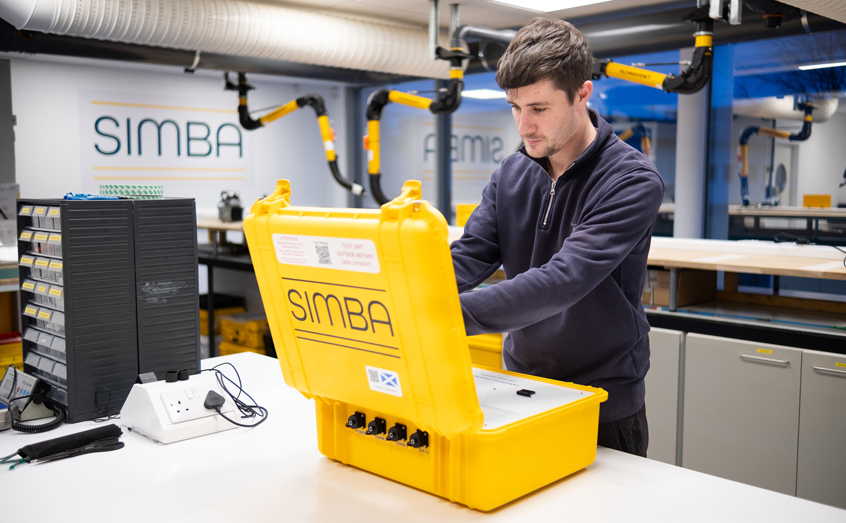SAMS news room
Temperature-sensing technology improving safety on snow and ice

Technology capable of monitoring snow and ice conditions in some of the most extreme and challenging environments on Earth is now providing real-world solutions to improving safety and infrastructure management in a changing climate.
SIMBA (Snow Ice Mass Balance Apparatus) is a powerful autonomous device that was originally designed as a scientific research tool for polar researchers but is now also being used to help forecast avalanche risk, assess the safety of ice roads, flood risk monitoring and protect energy infrastructure.
The device consists of a thermistor chain that measures temperature and thermal characteristics of the environment. These sensors deliver data in real time, giving detailed information on snow and ice pack conditions in regions and locations where safety is paramount.
In launching its latest version today [Monday], developer SAMS Enterprise, based in Oban, Scotland, has enhanced SIMBA’s capabilities for a number of commercial applications.
SIMBA units can now be seen across the Arctic and Antarctic, throughout northern Europe and in Canadian mountain ranges, providing valuable data for climate researchers, avalanche forecasters, hydroelectric power companies, engineers, transportation and logistics planners and flood risk evaluators.
Dr Mark Hart, SIMBA project manager, said: “Originally developed as a scientific research tool, SIMBA has evolved into a real-world solution used by those on the frontlines of climate, safety, and infrastructure management. With this history of providing scientifically accurate data, the New Generation SIMBA is the most reliable tool for quick and accurate snow and ice information.
“Operating in some of the most extreme environments on the planet requires reliability, durability and adaptability. That’s why the latest developments have included enhanced battery performance, compatibility with external power sources, SDI-12 enabled for third party sensors, Internet of Things (IoT) data transmission capability and USB-C interface.
“There is now capacity for two thermistor chains instead of one, meaning more data points, greater resolution and contingency to understand the environment. We have also been working with Peli Products UK to improve the robustness and appearance of the unit itself to make it more user friendly.”
Data from SIMBA units has contributed to more than 70 peer-reviewed research papers to date and 28 units were used on the MOSAiC expedition, billed as the largest polar expedition of all time.
In Canada, SIMBA units have been deployed as part of The Churchill River Monitoring project, which was established after a flood caused by an ice jam at the outlet into Goose Bay required the evacuation of a nearby community. The units autonomously return data every 6 hours, minimising the risk to people by reducing the number of visits onto the ice.
In the Cairngorm mountains, Scotland, SIMBA units are used to assess the snow depth, consistency and the rate at which it melts in order to provide data for avalanche forecasters.
